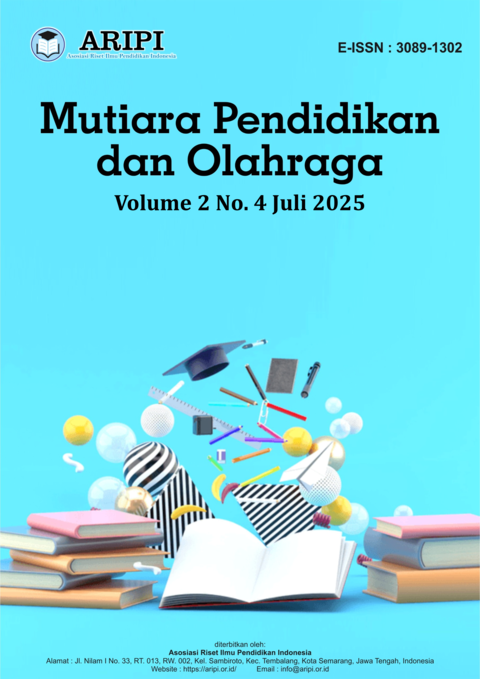Manfaat Infused Water dalam Mendukung Sistem Imun
DOI:
https://doi.org/10.61132/mupeno.v2i4.582Keywords:
infused water, antioxidants, flavonoids, hydration, gingerol, vitamin CAbstract
Infused water is a functional beverage made by soaking slices of fruits, vegetables, and herbs in mineral water to produce a natural flavor and enhance nutritional content. In recent years, infused water has become part of a healthy lifestyle trend due to its claimed benefits, including detoxification, improved hydration, and immune system enhancement. This article aims to review the latest scientific literature on the potential benefits of infused water on immune function, particularly in the context of regular consumption of natural ingredients such as lemon, ginger, strawberries, and herbs that are rich in vitamin C, antioxidants, and flavonoids. The review was conducted by searching scientific databases such as PubMed, Google Scholar, and ScienceDirect, using inclusion criteria that covered publications from 2020 to 2024. The findings indicate that infused water containing vitamin C, gingerol, and polyphenolic compounds can help improve immune function by reducing oxidative stress, suppressing inflammatory responses, and stimulating immune cell activity such as lymphocytes and macrophages. Furthermore, optimal hydration from infused water supports various physiological processes of the immune system. In conclusion, infused water holds potential as a simple, natural, and cost-effective strategy to support immune health. However, further research is needed to evaluate its efficacy, optimal formulations, and dosage for maximum benefit.
References
Ali, B. H., et al. (2020). Some phytochemical, pharmacological and toxicological properties of ginger (Zingiber officinale): A review of recent research. Food and Chemical Toxicology, 46(2), 409–420.
Calder, P. C., et al. (2020). A consideration of biomarkers to be used for evaluation of inflammation in human nutritional studies. British Journal of Nutrition, 113(S2), S1–S34.
Carr, A. C., & Maggini, S. (2017). Vitamin C and immune function. Nutrients, 9(11), 1211. https://doi.org/10.3390/nu9111211
García-Lafuente, A., Guillamón, E., Villares, A., Rostagno, M. A., & Martínez, J. A. (2009). Flavonoids as anti-inflammatory agents: Implications in cancer and cardiovascular disease. Inflammation Research, 58(9), 537–552. https://doi.org/10.1007/s00011-009-0037-3
Ghasemzadeh, A., et al. (2021). Flavonoids and phenolic acids: Antioxidant activity in vegetables. Journal of Medicinal Plants Research, 5(20), 4907–4914.
Handayani, R., et al. (2024). Penggunaan metode ultrasound untuk ekstraksi senyawa bioaktif. Jurnal Teknologi Pangan, 15(1), 45–53.
Lobo, V., et al. (2020). Free radicals, antioxidants and functional foods: Impact on health. Pharmacognosy Reviews, 4(8), 118.
Nugraha, S., et al. (2023). Efek vitamin C pada infused water terhadap imunologi tubuh. Jurnal Kesehatan Indonesia, 12(3), 123–132.
Popkin, B. M., D’Anci, K. E., & Rosenberg, I. H. (2010). Water, hydration, and health. Nutrition Reviews, 68(8), 439–458. https://doi.org/10.1111/j.1753-4887.2010.00304.x
Putri, M., & Sari, R. (2021). Pengaruh infused water lemon terhadap kesehatan tubuh. Media Gizi & Kesehatan, 9(2), 78–84.
Rahmawati, T., et al. (2022). Efektivitas infused water jahe putih dan kurma Ajwa. Jurnal Penelitian Gizi, 14(4), 98–110.
Santoso, B., et al. (2023). Potensi antioksidan dari by-product pertanian dalam infused water. Jurnal Sains Pertanian, 11(5), 67–76.
Wang, X., et al. (2021). Optimization of bioactive compounds extraction from herbal mixtures. Food Research International, 140, 109849.
Watzl, B., et al. (2021). Contribution of fruits and vegetables to immune function. Nutrients, 13(3), 920.
Zhao, M., et al. (2022). Stability of phenolic compounds in plant-based beverages. Journal of Food Composition and Analysis, 105, 104277.
Downloads
Published
How to Cite
Issue
Section
License
Copyright (c) 2025 Mutiara Pendidikan dan Olahraga

This work is licensed under a Creative Commons Attribution-ShareAlike 4.0 International License.





